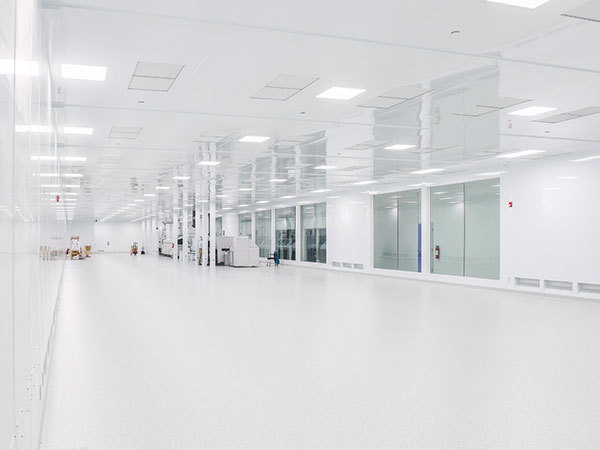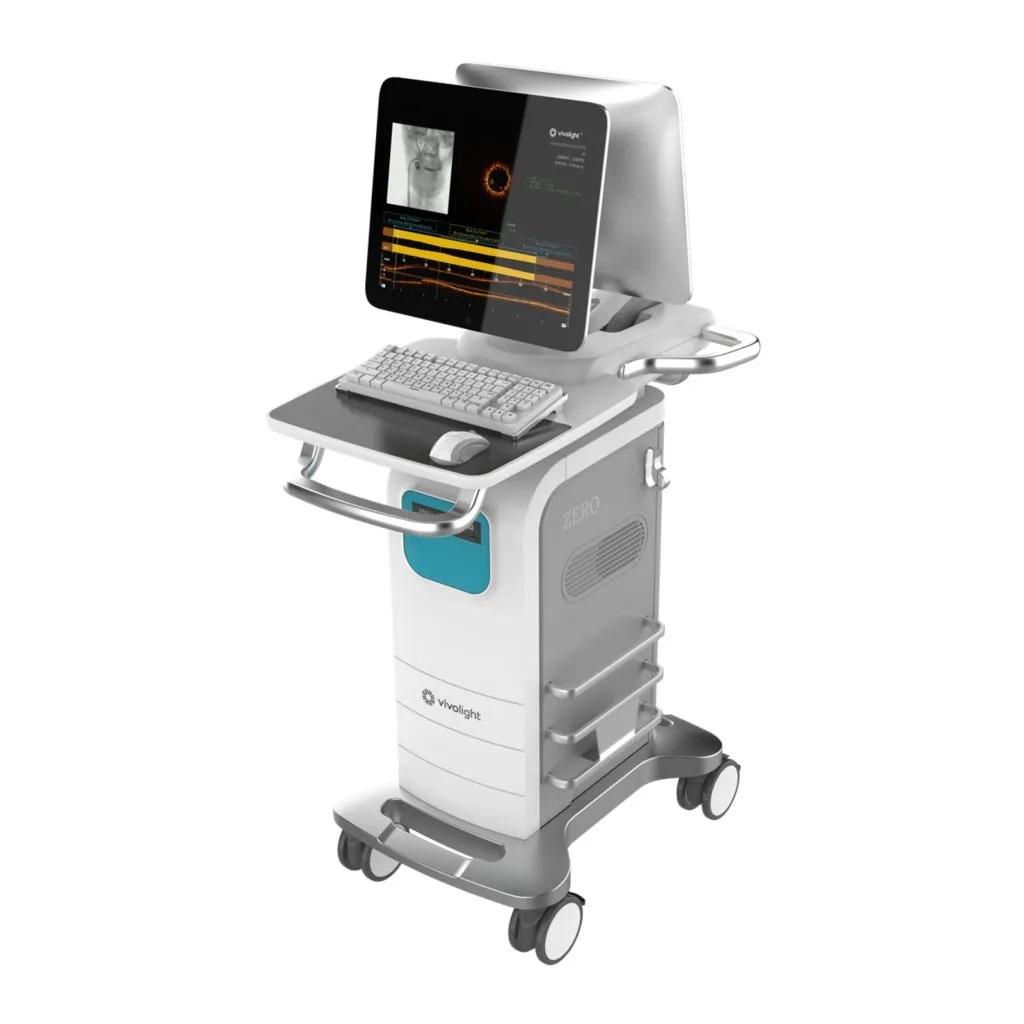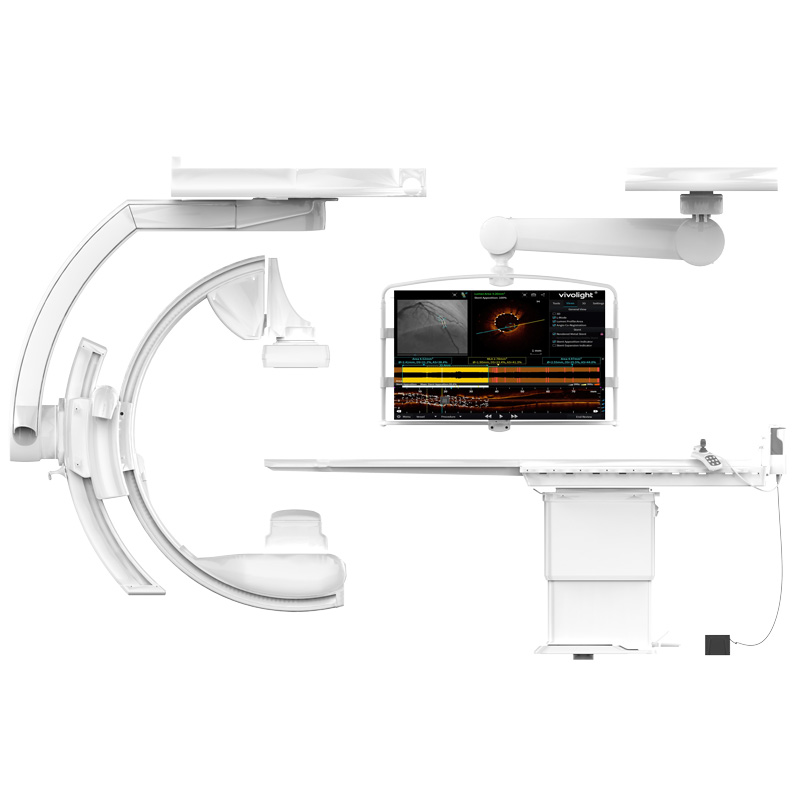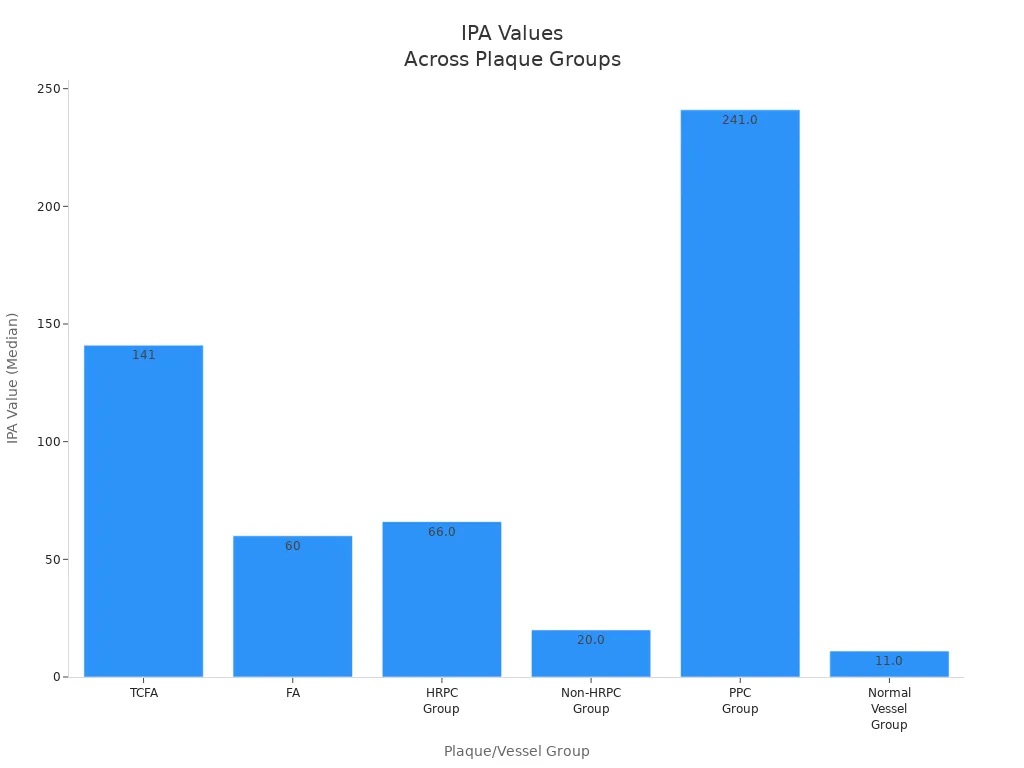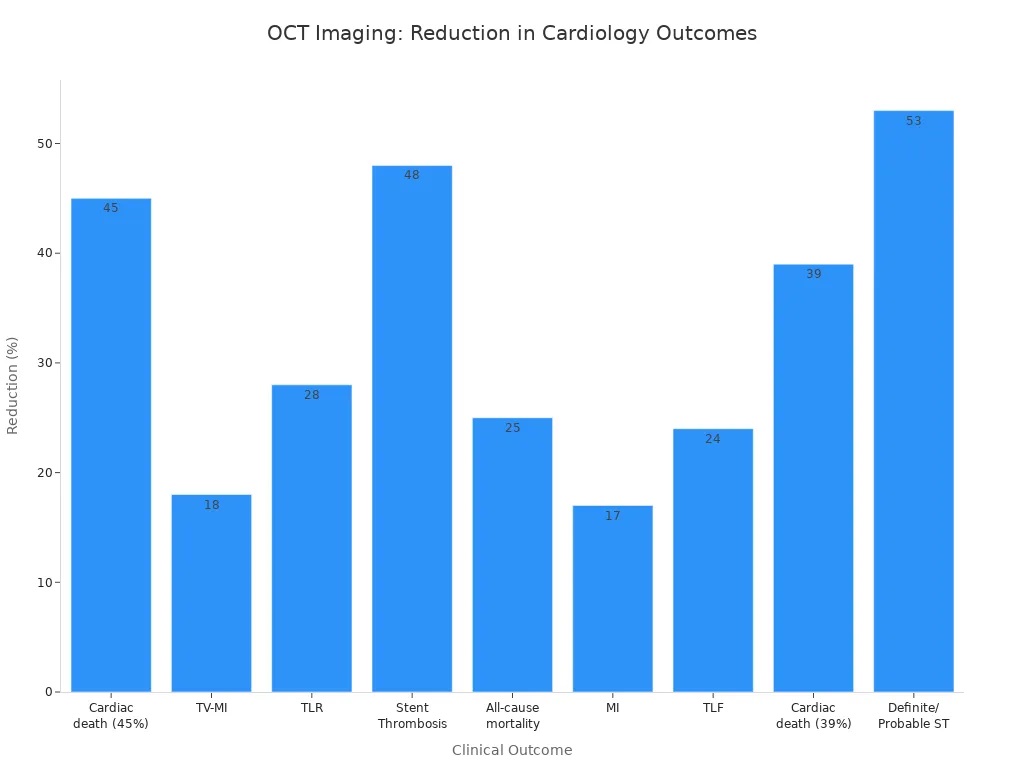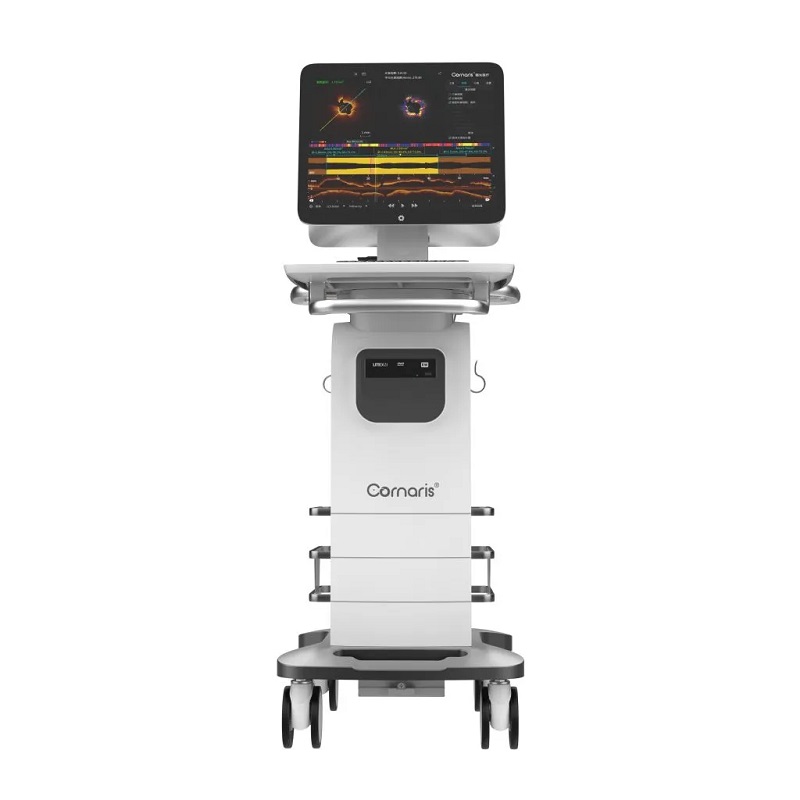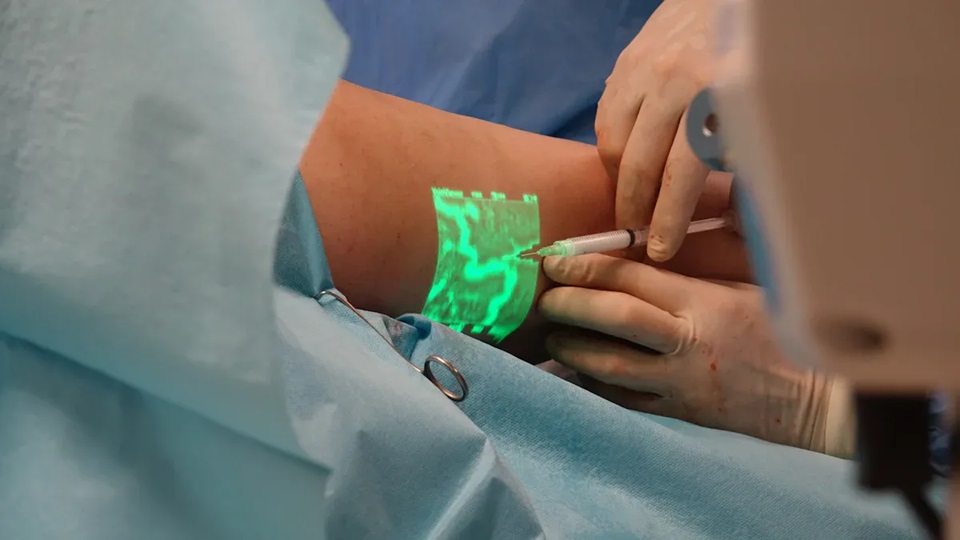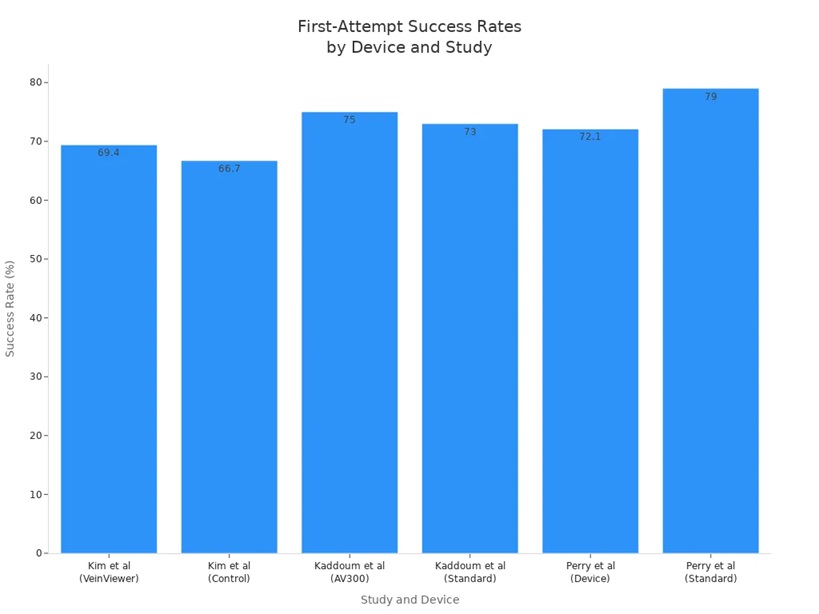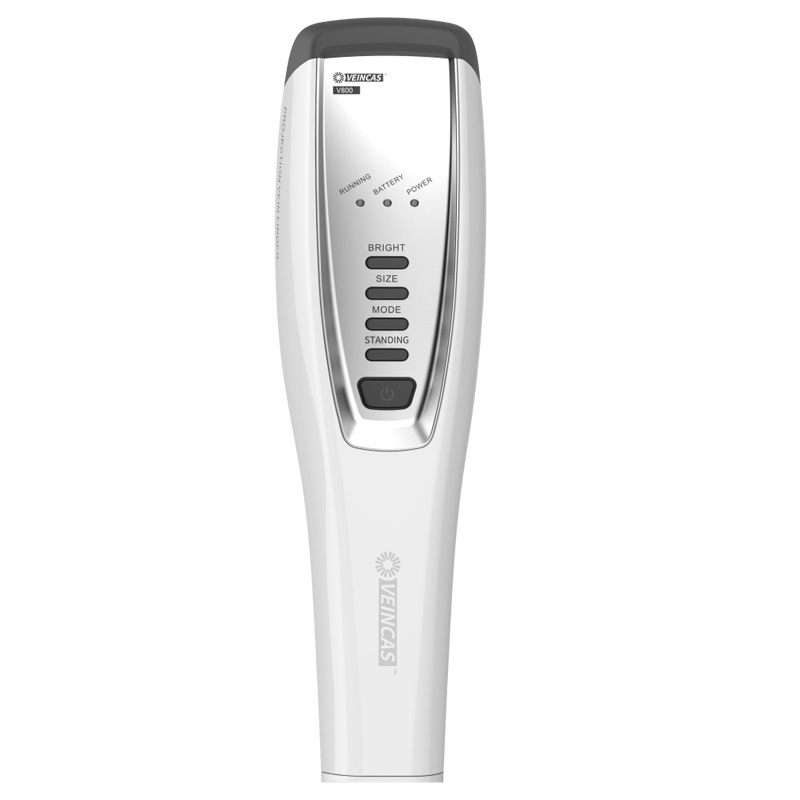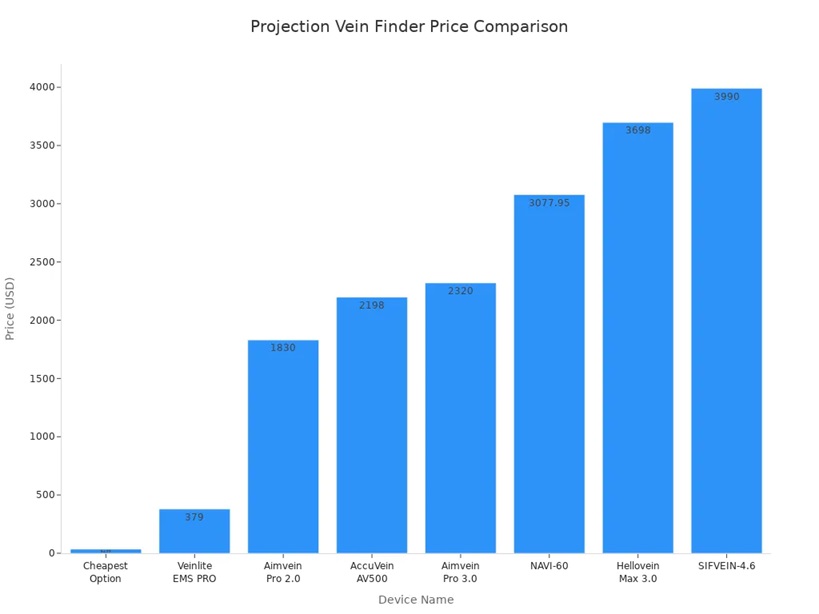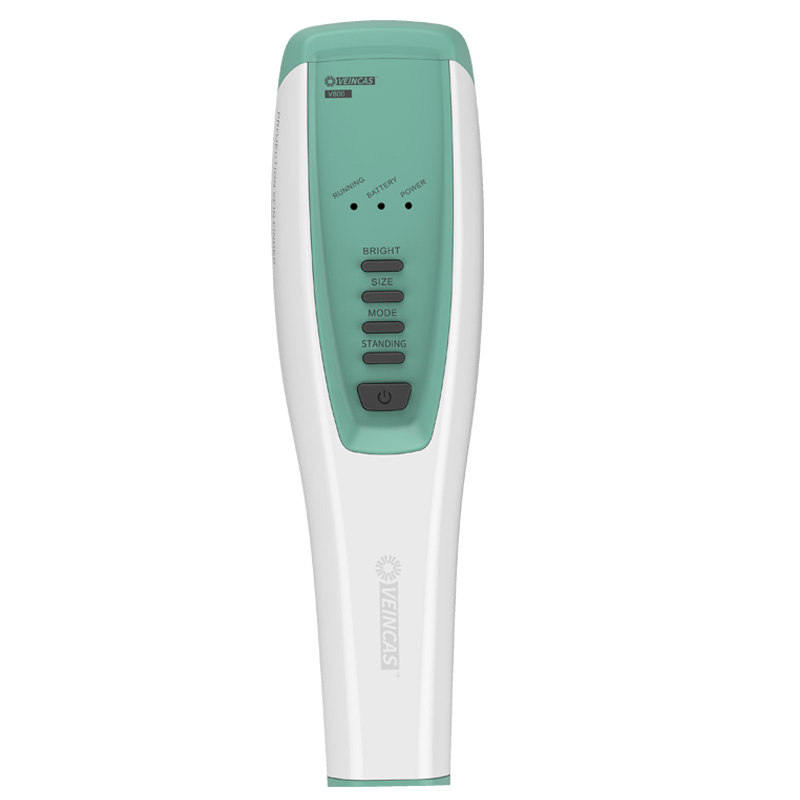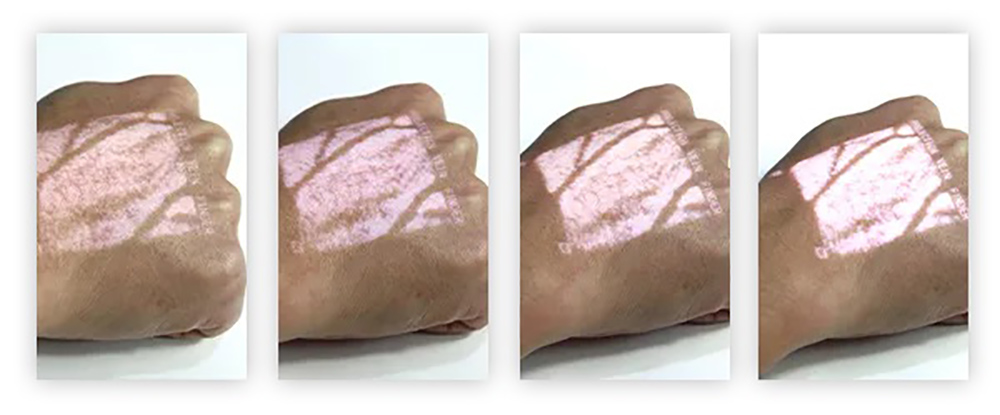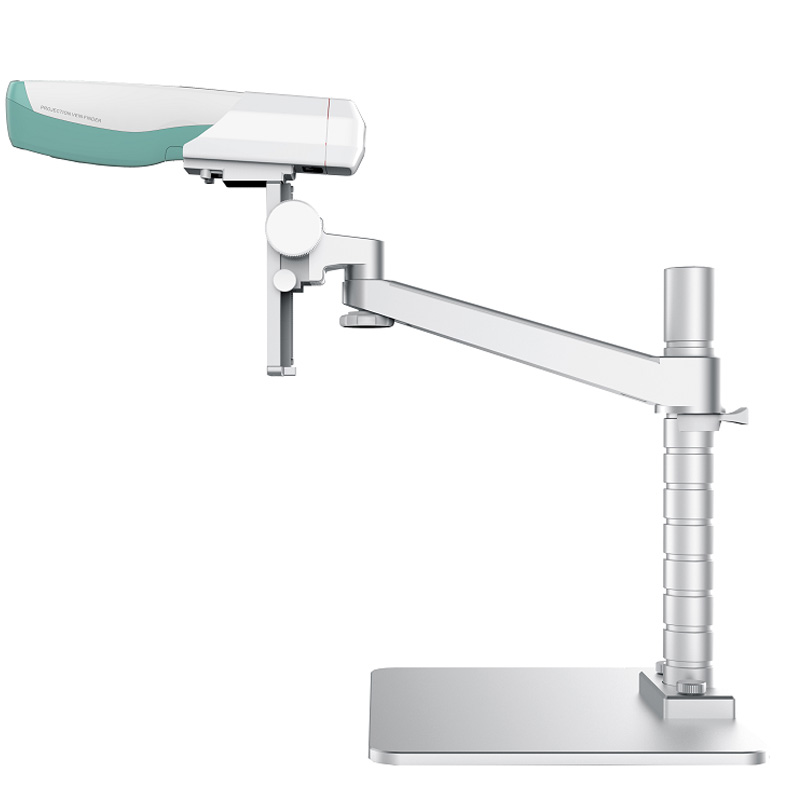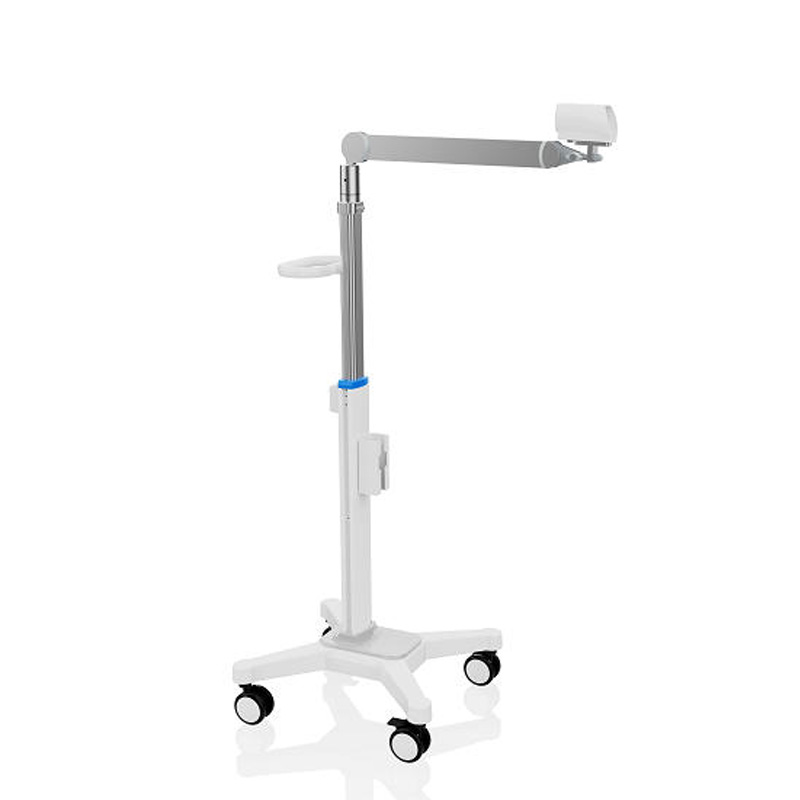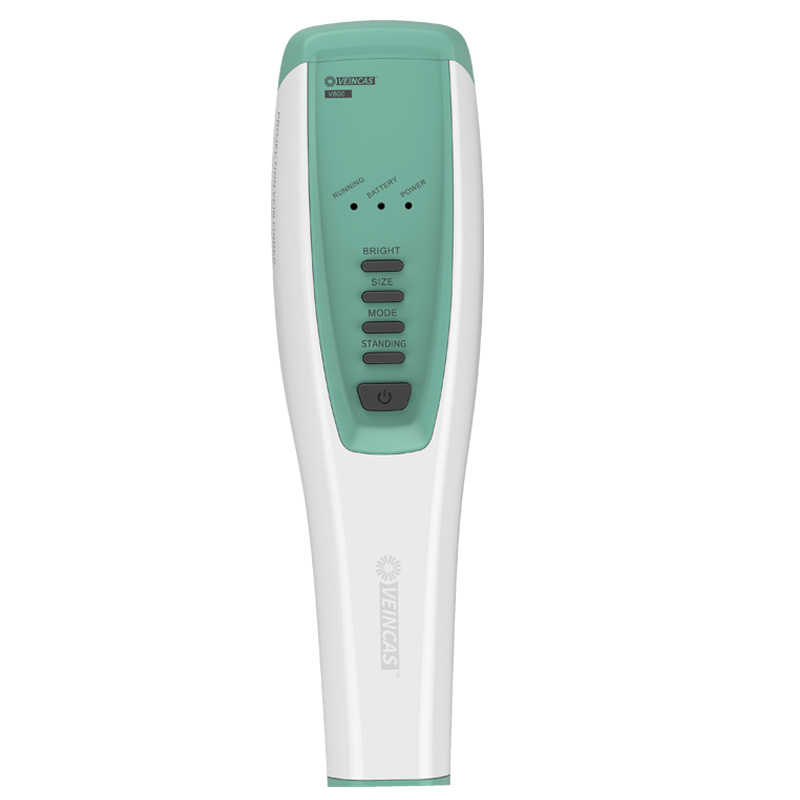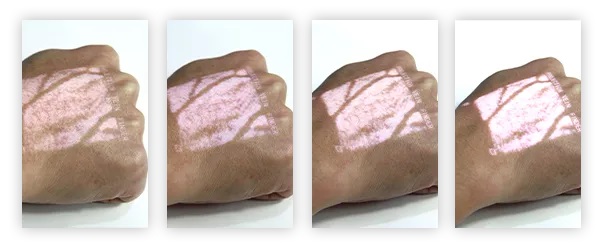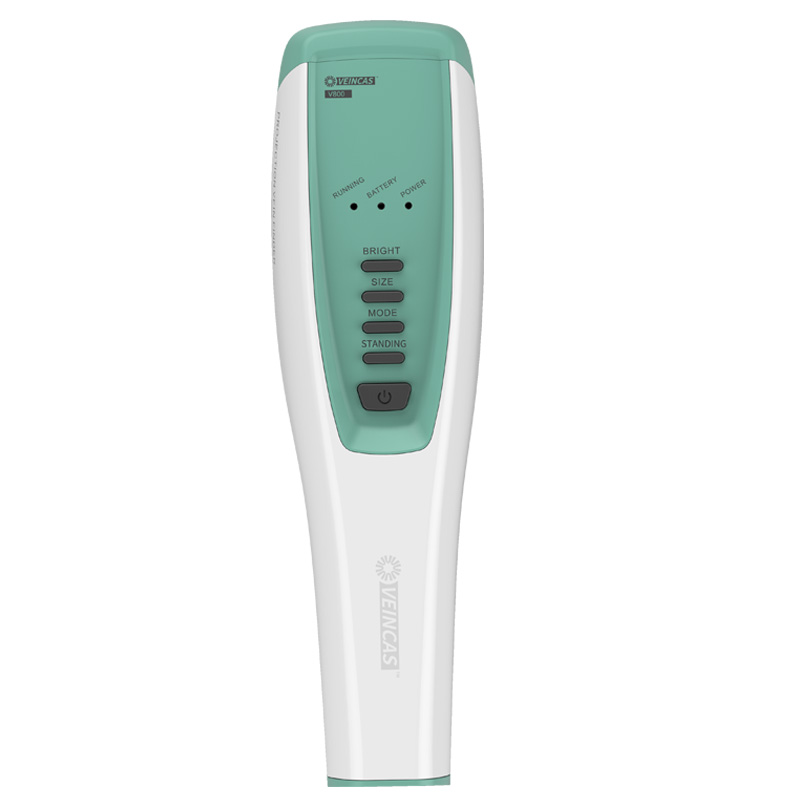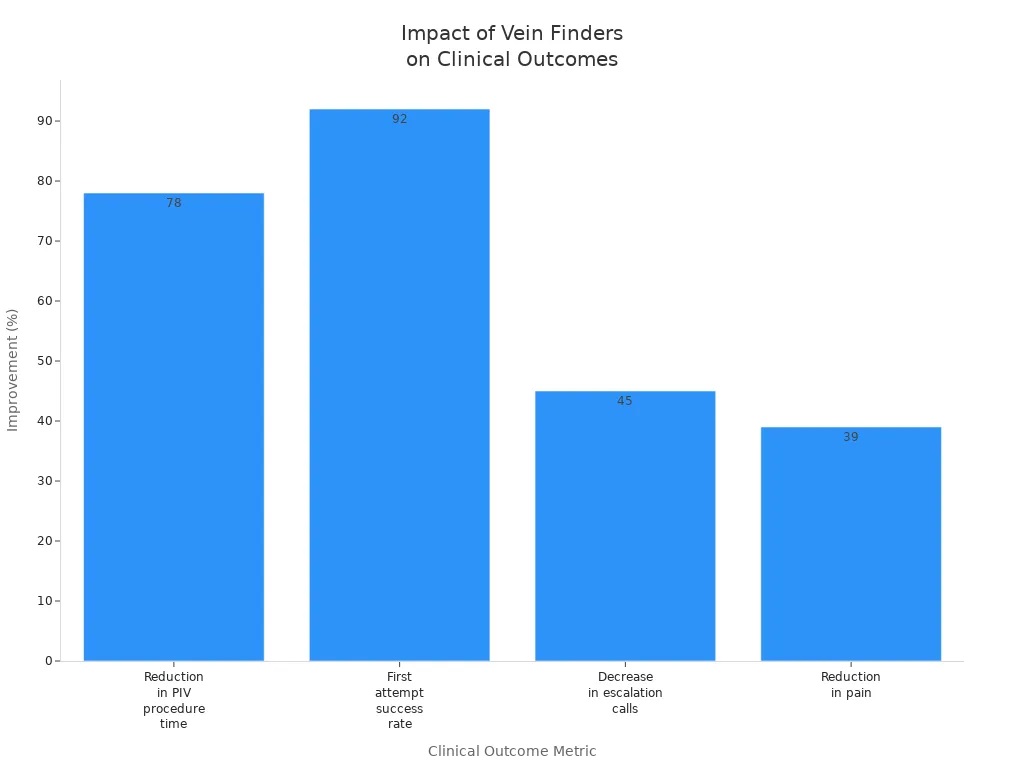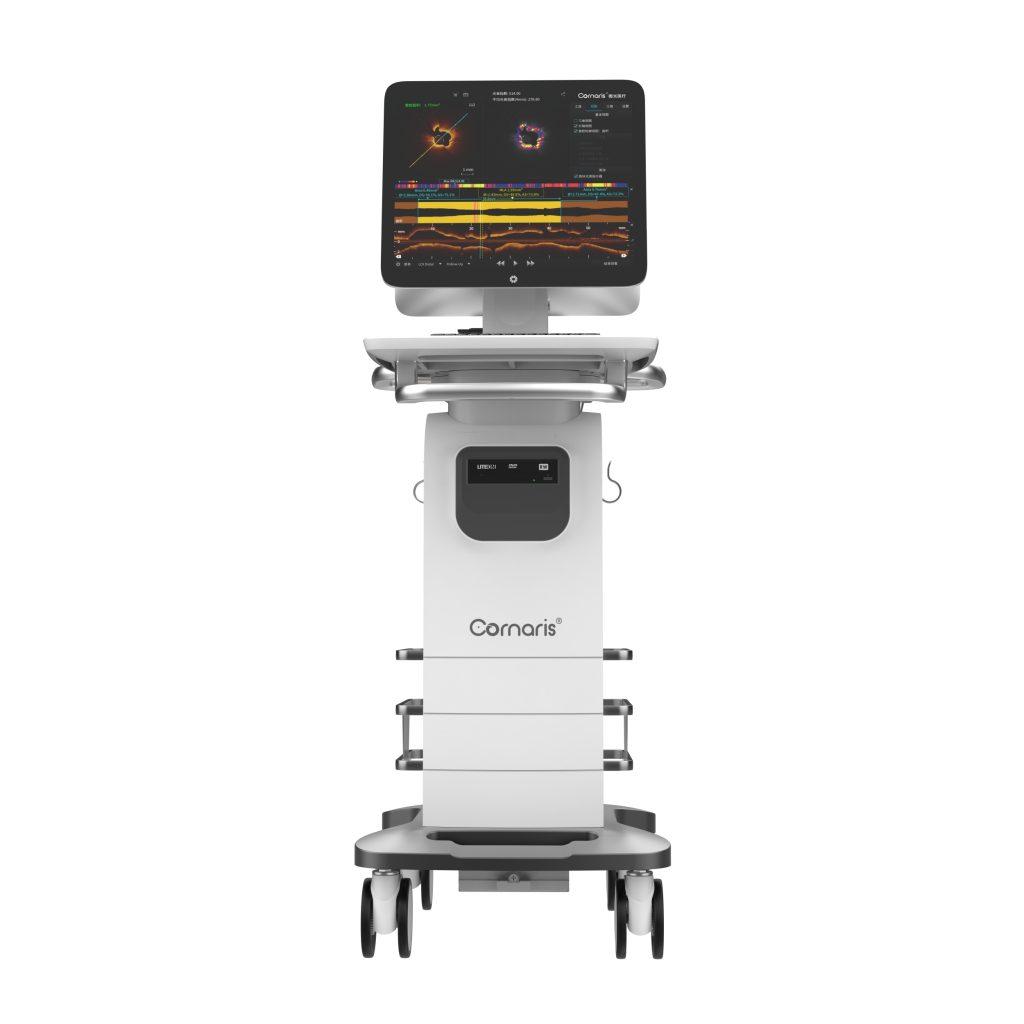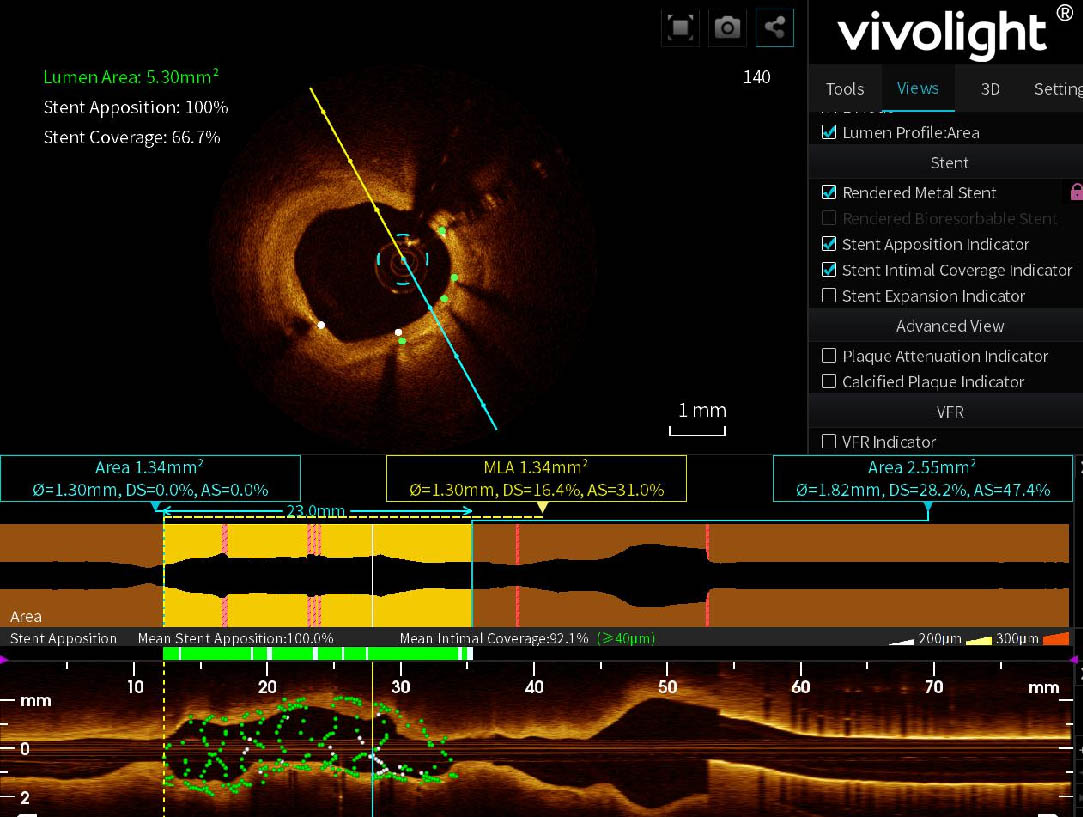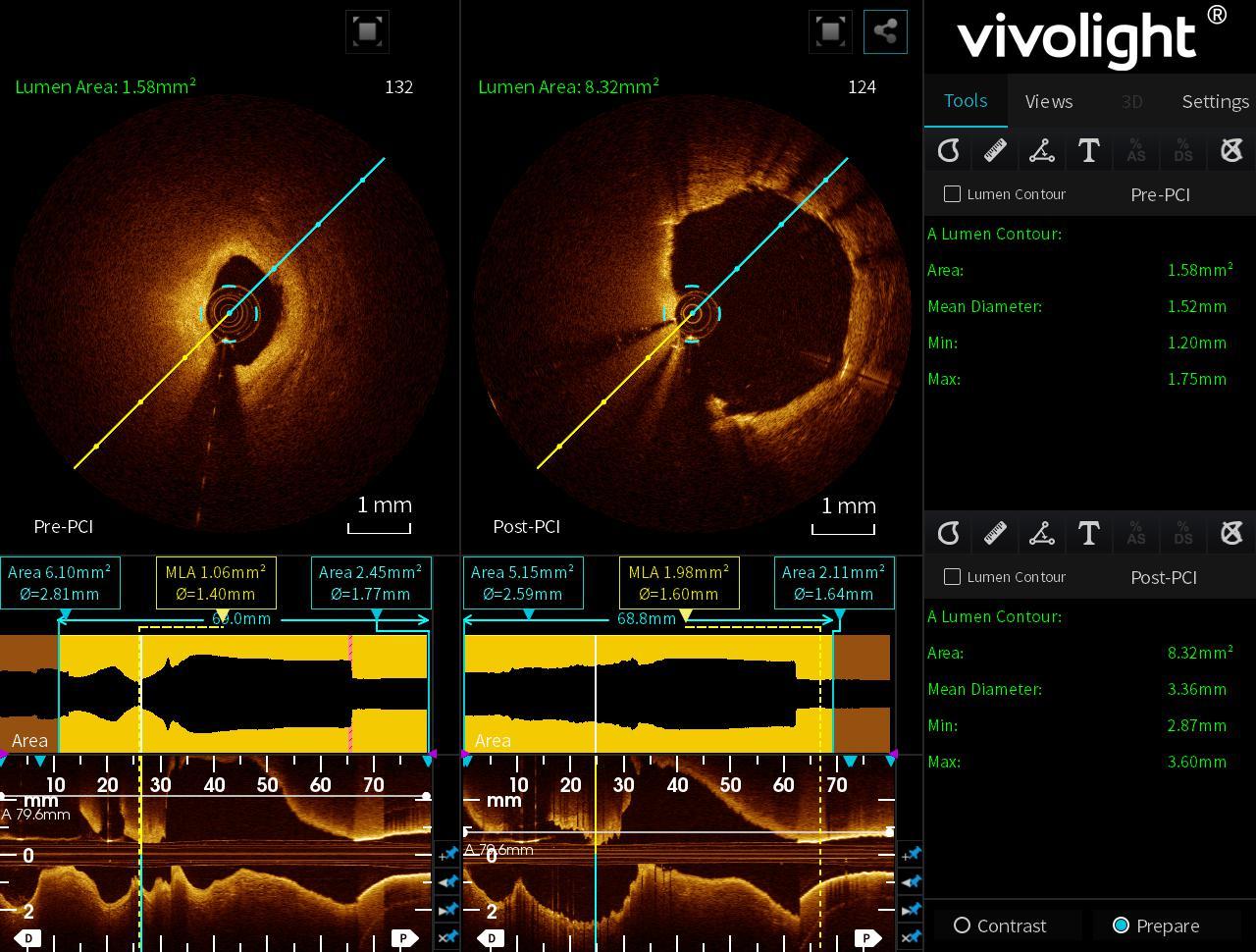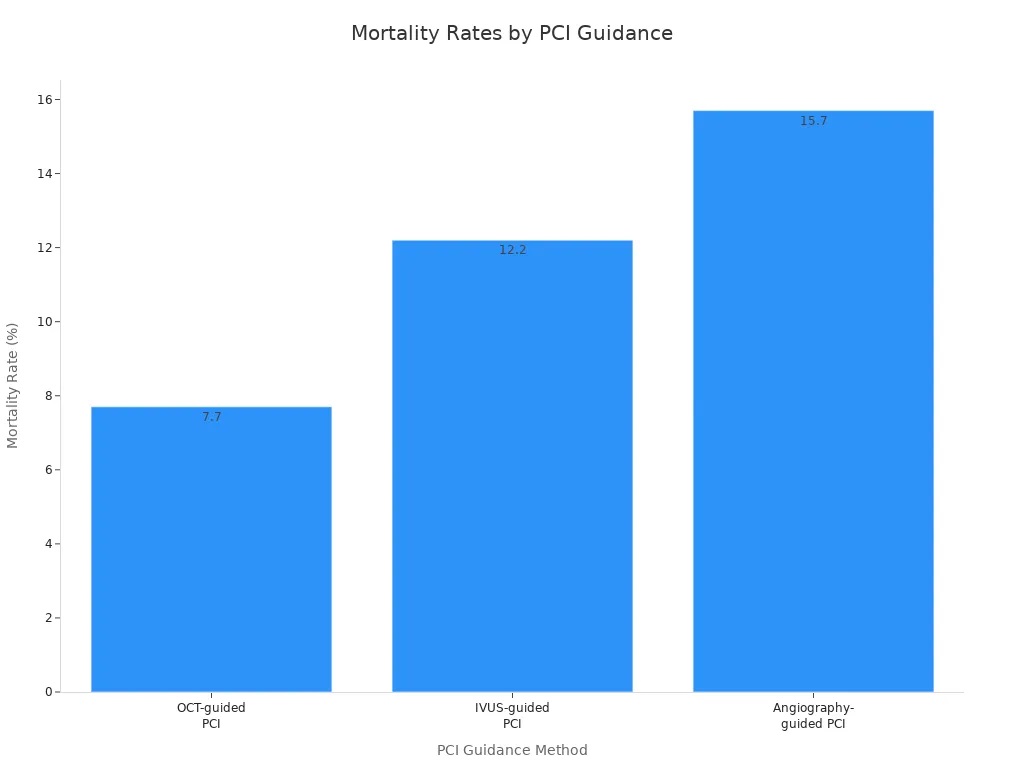Choosing the best projection vein finder can seem hard. You can make it easier by looking at what is most important for your clinic. Think about your patients, your staff, and your daily work. Here are some main things clinics often look at:
|
Factor
|
Why It Matters
|
|
Technological efficacy
|
Real-time vein images help you find veins fast. This can lower the number of failed tries.
|
|
Regulatory approvals
|
Devices with approvals like FDA help you trust their safety and reliability.
|
|
Cost considerations
|
Your budget and payment plans change what you can buy and use.
|
|
Training requirements
|
Easy-to-use devices save time and help your staff learn quickly.
|
|
Industry innovations
|
New features, like AI, can make your work easier.
|
Think about how each of these things fits with your work and your patients.
Key Takeaways
-
Think about how well the technology works. Devices that show real-time vein images can help lower failed tries. They also make patients feel more comfortable.
-
Look for regulatory approvals. Devices with FDA approval are safe and reliable. This helps you feel calm during procedures.
-
Check the cost and payment choices. Pick devices that fit your budget. Also, think about saving money over time with better results.
-
Pay attention to how easy it is to use and learn. Choose devices that are simple to use and need little training. This helps your staff give better care fast.
-
Make portability and adaptability important. A light, adjustable device can be used in many places. This helps your clinic meet patient needs better.
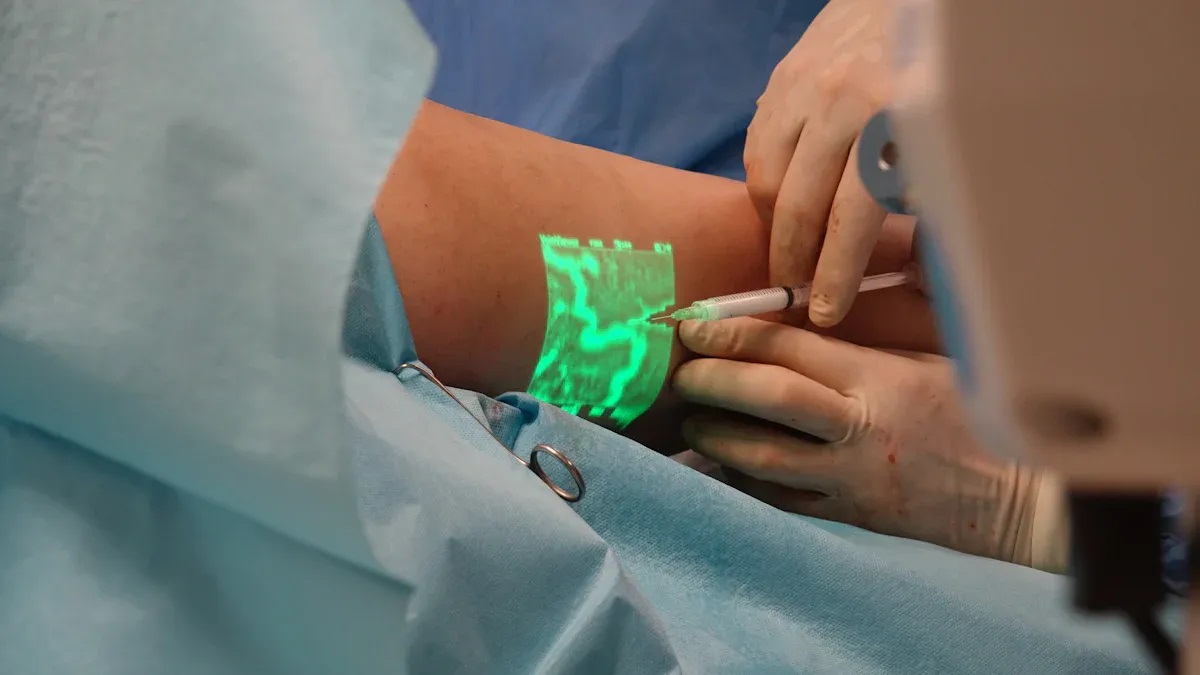
Clinical Needs for Projection Vein Finder
Patient Demographics
Clinics treat many kinds of patients. Some are kids, some are older people, and some need special care. The right projection vein finder helps you care for each group. Different patients react to these devices in different ways:
|
Study
|
Population
|
Findings
|
|
Hess, 2010
|
Pediatric
|
More first-attempt success, fewer tries, and less time needed
|
|
Chapman et al., 2011
|
Pediatric (0-17)
|
No big change in success rates, but faster for kids under 2
|
|
Szmuk et al., 2013
|
Skilled nurses
|
Lower first try success with device than with regular methods
|
Kids often do better with a projection vein finder, especially the youngest ones. Older people with weak veins can also get better results. Every patient is unique, so you need a device that fits your main patient groups.
Use Frequency and Setting
Think about how much you use a vein finder and where you use it. Busy clinics and emergency rooms need a device that works fast. Medical staff say finding veins quickly helps patient care. Devices like VeinViewer show veins right away, which matters when time is short.
Here are some common times when a projection vein finder helps:
|
Clinical Scenario
|
Description
|
|
Venipuncture assistance
|
Raises success rate from 60-75% to 85-95%, especially for hard-to-find veins
|
|
Navigation for surgery and interventional therapy
|
Helps in vascular surgeries, making procedures like PICC placement easier
|
|
Emergency and Intensive Care
|
Gets IV access fast in emergencies, often in less than a minute
|
|
Management of chronic venous diseases
|
Supports screening for varicose veins and DVT, helping with early diagnosis and treatment
|
-
You can get a first stick success up to 100%.
-
You spend less time putting in IVs.
-
Fast access means patients get help sooner and clinics work better.
If you see lots of patients or handle emergencies, you want a projection vein finder that is quick, reliable, and simple to use. This helps you give great care to every patient, every time.
Projection Vein Finder Features

Image Clarity and Depth Display
When you use a projection vein finder, you want to see veins clearly. Good image clarity helps you find the right vein fast. This means you miss fewer veins and your patient feels less pain. Vein finder technology uses near-infrared technology to show veins under the skin. If the image is clear, it is easier to find the best spot for blood draws or IVs.
Let’s see how some top vein viewers compare:
|
Model
|
Maximum Projection Depth
|
Image Resolution
|
|
Vdetector-D1
|
≤ 8mm (10mm with intensifier)
|
824x480
|
|
Vdetector-P2
|
≤ 8mm (10mm with intensifier)
|
824x480
|
|
VF-X2
|
≥ 6mm
|
824x480
|
Most devices show a clear image up to 8-10mm deep. This helps you map veins, even in patients with deep or hard-to-find veins. Vein visualization is important for vascular access, especially when you need to work fast.
Tip: Clear images from vein finder technology help you succeed on the first try. You spend less time looking for veins, and your patient is more comfortable.
Here’s what studies say about image clarity and first-attempt success: Vein finder technology makes images clearer, so veins are easier to see. Using vein finders helps you succeed on the first try for venipuncture. You can finish the procedure faster, so your patient has less pain and stress. One study found a first-attempt success rate of 92% with vein finders, while standard methods had 97%. Another study showed a 60.9% success rate with vein finders, but the control group only had 15.2%.
With near-infrared technology, you see the vascular system in real time. This helps you make quick choices during medical procedures. Depth display is important too. If you know how deep the vein is, you can pick the right needle and avoid missing the vein.
Noise Level and Usability
You want a device that is quiet. Loud machines can make patients feel scared, especially kids or people who worry about medical care. Most modern vein finder technology uses near-infrared technology, which is almost silent. This keeps the room calm and lets you focus on your work.
Usability matters a lot too. You need a device that is easy to hold, simple to use, and quick to set up. Let’s look at some popular vein finders:
|
Brand
|
Price
|
Imaging Depth
|
Key Features
|
Usability Aspects
|
|
Aimvein Pro 2.0
|
$1,830
|
7-10 mm
|
Normal/inverse imaging, 7 colors, sleep mode
|
Good interface, portable, works on all skin types
|
|
Aimvein Pro 3.0
|
$2,320
|
N/A
|
Real-time vein mapping, adjustable brightness
|
Boosts first stick success, easy to hold
|
|
Hellovein Max 3.0
|
$3,698
|
12 mm
|
HD image, user-defined functions
|
Works on many skin tones, veins easy to see
|
|
NAVI-60
|
$3,077.95
|
6 mm
|
Real-time imaging, depth indicator
|
Versatile, improves patient safety
|
|
Nextvein V800NV
|
N/A
|
N/A
|
Multi-color AR projection
|
User-friendly, long battery life
|
|
VeinViewer Flex
|
N/A
|
N/A
|
Lightweight, HD imaging
|
Ultra-portable, great for emergency care
|
Features like real-time image, adjustable brightness, and easy controls help a lot. Vein mapping is faster and more accurate. You can use these devices for many jobs, from blood draws to vascular access in emergencies.
Note: A user-friendly vein finder saves time and helps you avoid mistakes. You can teach new staff quickly, and everyone feels more sure during medical procedures.
Adjustable Mounting and Portability
You may need to move your vein finder to different rooms or clinics. Adjustable mounting and portability make this easy. Some devices have stands, while others fit in your hand or pocket. This helps you use the same device in many places.
Modern infrared vein viewer models use near-infrared technology and are made to be portable. You can take them to the bedside, the ER, or even to outpatient clinics. This means you always have the right tool, no matter where you work.
New technology like near-infrared technology and ultrasound integration makes portable vein finders more accurate and easier to use. These devices fit into your daily work and support open APIs, so you can connect them to electronic health records. This is important for healthcare centers with many locations, where you need to share data and keep track of procedures.
Pro Tip: Pick a projection vein finder that is light and easy to mount. This way, you can use it for any patient, in any place, without slowing down your work.
Portability also means you can act fast in emergencies. You can bring the device to the patient, instead of moving the patient to the device. This saves time and helps you give better care, especially for vascular access and blood draws when time matters.
Medical Vein Finder Safety and Compliance
Certification and Approvals
It is important to pick a projection vein finder that meets the right rules. These rules help you trust the device and keep patients safe. In the United States and other big healthcare places, you should check for two main certifications:
|
Certification/Approval
|
Description
|
|
FDA Approval
|
Requires rigorous clinical testing and validation for market entry.
|
|
ISO 13485
|
Ensures product safety and efficacy, enhancing clinician confidence.
|
If a device has FDA approval, it passed tough tests for medical use. ISO 13485 means the company follows rules to make safe medical tools. These certifications help you feel sure about using the device. They also help you keep your patients safe in your clinic. You can trust a medical vein finder with these standards, especially when helping patients with venous insufficiency.
Infection Control and Cleaning
Keeping your projection vein finder clean is very important. This helps stop infections and keeps every patient safe. Devices with good infection control features make this easier. Here are some ways these devices help protect patients:
|
Infection Control Feature
|
Description
|
|
Reduced Risk of Multiple Punctures
|
Portable vein finders minimize the number of punctures needed, thereby lowering the risk of infection.
|
|
Improved Vein Visualization
|
Enhanced accuracy in locating veins decreases the likelihood of puncturing arteries or other structures, which can lead to infection.
|
|
Minimized Complications
|
By reducing failed venous access attempts, the device helps to lower the risk of complications such as infection.
|
|
Enhanced Efficiency
|
The device improves the efficiency of medical procedures, which indirectly contributes to infection control by reducing the number of attempts needed.
|
You must follow cleaning steps to keep your device safe for everyone. Different parts of the device need different cleaners. Here is a quick guide:
|
Surface Type
|
Approved Cleaning Agents
|
Harmful Cleaning Agents
|
|
Hard Surfaces (AV500)
|
Isopropyl Alcohol (max 70%), PDI Sani-Cloth Plus, etc.
|
Virex, Bleach > 10%, Hydrogen Peroxide
|
|
Optical Surfaces
|
Alcohol wipes, Eye glass cleaning cloth
|
N/A
|
|
Electrical Contacts
|
Electrical contact cleaner
|
N/A
|
|
Hard Surfaces (AV400)
|
Isopropyl Alcohol (max 70%), 10% bleach dilution
|
CaviWipes, Cavicide, Bleach > 10%, Hydrogen Peroxide
|
Tip: Always read the cleaning guide for your device. Using the wrong cleaner can break your medical vein finder and make enhanced patient safety worse.
If you help patients with venous insufficiency, you know infection is a big worry. Cleaning your device the right way helps keep patients safe and your clinic working well. You can trust your projection vein finder to help you give better care and keep everyone safe.
Vein Finder Cost and Value
Budget and Payment Options
The price of a projection vein finder is important. You want your clinics to get good value for the money spent. Some devices cost more at first, but they might save money later. Flexible payment plans and leasing can help clinics pay for these devices. You should also check if your medical facility has reimbursement policies. These policies can make buying easier.
Here are some things that affect your choice:
|
Factor
|
Description
|
|
Cost-effectiveness
|
The affordability of infrared vein finders influences procurement decisions.
|
|
Reimbursement policies
|
Favorable reimbursement policies can enhance the attractiveness of purchasing these devices.
|
|
Cost barriers
|
Initial investment can be high; flexible financing options and leasing models can help mitigate costs.
|
If you see many patients or want better first-attempt success, a good vein finder can help your team work faster and safer. You should also think about the total cost, not just the price tag. Maintenance, training, and support add up over time.
Tip: The first price is not the only thing that matters. The real value comes from how much the device helps your clinics do better vein punctures and treat patients well.
Warranty and Maintenance
A warranty gives you peace of mind. You want your device to last and get help if it breaks. Different brands have different warranty times and what they cover. Here is a table to help you compare:
|
Product Type
|
Warranty Duration
|
Coverage Details
|
|
SIF Vein Finder
|
15 Months
|
Covers defects in material and workmanship under normal use. Excludes damage from negligence, theft, etc.
|
|
Veinlite Models
|
5 Years
|
Covers specific models purchased online. Non-disposable products have a 12-month warranty.
|
|
AccuVein Device
|
1 Year
|
Standard warranty with an option to purchase up to 2 additional years of service.
|
You should also remember maintenance. Some clinics forget that repairs, upgrades, and training cost money too. If you ignore these, you might pay more later. Regular maintenance keeps your vein finder working well and helps your clinic run smoothly.
-
SIF Vein Finder covers defects for 15 months.
-
Veinlite gives up to 5 years for some models.
-
AccuVein covers your device for one year, with extra service you can buy.
The AccuVein warranty lasts one year from when you buy it. You can buy up to 2 more years of AccuVein Platinum Service with new AV500 devices.
When you pick a vein finder, look at the warranty and maintenance plan. This helps your clinics avoid problems and keeps your team ready for every patient. You want a device that fits your needs, helps with puncture accuracy, and works for intravenous catheterization. Good support means better care for patients and fewer problems for staff.
User Experience and Training
Staff Training Needs
When you bring a new projection vein finder into your clinics, you want your staff to feel confident. Training is a big part of this. Many clinics find that staff need time to learn how to use the device the right way. Sometimes, clinics do not have enough resources for full training. This can lead to mistakes or confusion.
Here are some common training challenges you might face:
-
Staff may not get enough hands-on practice.
-
Some team members may misunderstand how to read the images.
-
Busy clinics may struggle to schedule training sessions.
You can solve these problems by offering workshops or online courses. Ongoing training helps your team stay sharp. When your staff knows how to use the device, you see more first-attempt success. This means your patients get better care and feel less stress.
Interface and Workflow Integration
You want a device that fits smoothly into your daily work. The best projection vein finders have simple controls and clear screens. These features help you work faster and make fewer mistakes. Patient comfort improves when you use a device that is easy to handle.
Clinicians value these user interface features:
|
Feature
|
Description
|
|
Ease of Use
|
Quick to learn and simple to operate, even for new staff.
|
|
Patient Comfort
|
Painless method that helps patients relax during procedures.
|
|
Accuracy
|
High-quality images help you find veins and avoid problems.
|
|
Efficiency
|
Real-time images let you work quickly and help more patients.
|
You also want your device to work with your clinic’s systems. Many devices now connect to hospital networks using Bluetooth or Wi-Fi. Some support DICOM or HL7, so you can add images to electronic health records. This makes your clinical healthcare process smoother and helps you track patient care.
When you choose a projection vein finder that matches your workflow, you help your clinics run better. Your team works faster, and your patients feel more comfortable every time.
Brand Reputation and Reviews
Customer Feedback
When you want a projection vein finder, you should check what others say. Real reviews show if a brand does what it promises. Many people say these devices make their jobs easier. They also help patients feel better. You can learn from what users share.
Here are things customers talk about most:
|
Pros
|
Cons
|
|
Extremely accurate
|
Expensive
|
|
Fast setup
|
Needs direct skin contact
|
|
Rechargeable, clear display
|
A bit bulkier than others
|
|
Compact
|
Not as good for deep veins
|
|
Increased success rate
|
Cost
|
|
Less patient discomfort
|
Accuracy can change
|
|
Saves time
|
Training needed
|
|
Good for tough cases
|
You depend on the device
|
|
Good for teaching
|
Battery life can be short
|
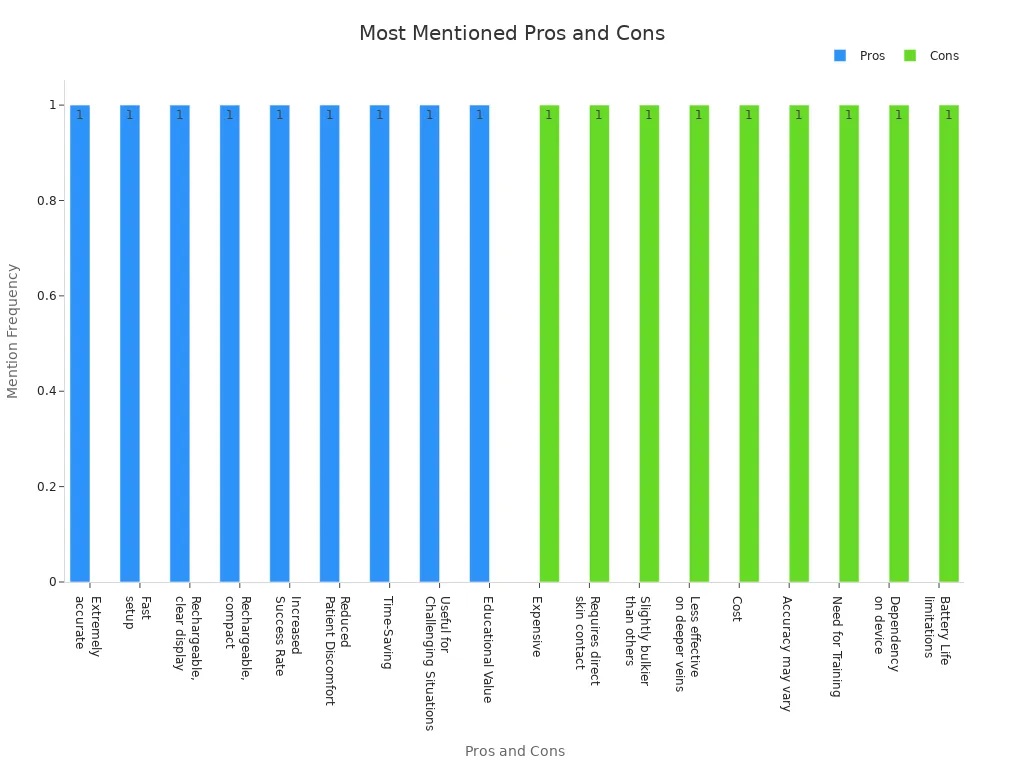
People like that these devices are accurate and quick. They also say patients feel less pain. Some users think the price is high. Others say you need training. Some mention battery life is not long. Reading reviews helps you see what matters most for your clinic.
After-Sales Support
Brand reputation is more than just the product. You want a company that helps you after you buy. Good support is important if you have questions or problems.
"The only thing better than the quality of the Vein Zone is the customer service. They were great and always answered my questions. They made sure we got the device on time. I really like Vein Zone. They are the best."
"From onboarding to post-sale support, Vein Zone's team has been the most responsive we've worked with."
Most top brands give strong support. Here are some services you may get:
|
Feature
|
Description
|
|
One Year Warranty
|
Fixes almost any problem for a year.
|
|
Equipment Forward-Swap
|
Sends a replacement fast if your device breaks.
|
|
Service Plan Extensions
|
Lets you add more years of coverage.
|
|
Loss Protection
|
Helps if your device gets lost or stolen (with longer plans).
|
|
Battery Replacement
|
Gives you new batteries if yours stop working.
|
If you pick a brand with good reviews and support, you feel safe. You know you can trust your device and the company.
Picking the right projection vein finder might seem hard at first, but you can make it easier. Begin by thinking about what your clinic needs most. Here is a simple table to help you remember important things:
|
Decision Point
|
What to Check For
|
|
Technology Type
|
NIR or transillumination
|
|
Portability & Design
|
Handheld, tabletop, or wearable
|
|
Features
|
Brightness, image modes, hands-free use
|
|
Safety & Maintenance
|
Certifications, easy cleaning
|
|
Cost
|
Price and long-term savings
|
|
Applications
|
Where you plan to use it
|
Make a checklist for yourself. Think about what your clinic needs, how much money you have, and how the device will help your team and patients in the future. If you look at both the features and how simple it is to use, you will find the best projection vein finder for your clinic.
